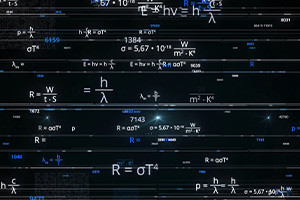Functions are often described as a machine in a box that is open on two ends. You put something into one end of the box, it gets changed inside the box, and then the result pops out the other end. The ‘function’ is the machine inside the box and it is defined by what it does to whatever you put into it. This is a free online course that introduces you to special as well as polynomial functions. It outlines examples of polynomial functions and how to identify their degrees, for example, if each element of a matrix A is a polynomial in x and if |A| vanishes for x = a, then (x - a) is a factor of | A |. In this course, you will learn about two important theorems that are useful in searching for the roots of polynomial equations. The material also differentiates between the remainder theorem and factor theorem.
A relation between two sets is a collection of ordered pairs containing one object from each set. A function is a type of relation. But, a relation needs to have the object x in the first set to be related to more than one object in the second set. In this course, you will learn about the properties of relations and functions. It explains the arithmetic operations of addition, subtraction, multiplication and division. See how to prove that functions are Inverses. The material explains how to solve constants and identify functions using examples. Learn the difference between constant functions and identity functions. An absolute value function is a function that contains an algebraic expression within absolute value symbols. This course teaches you the geometric definition of the absolute value function and how to solve absolute values. Study the difference between linear functions and linear equations.
Finally, the greatest integer function is one that takes an input and gives an output that is the greatest integer that is less than or equal to the input. Master how to graph and solve greater integer functions. You will learn about exponential growth and exponential depreciation. See how to plot a graph of quadratic functions. This course also introduces you to graphical transformations. You will discover the properties preserved in all translations, reflections and rotations. The rotation of isometry will be discussed. This course will be of significant interest to those taking College-Level Examination Program (CLEP) math courses or who need a refresher in functions.
What You Will Learn In This Free Course
View All Learning Outcomes View Less All Alison courses are free to enrol, study, and complete. To successfully complete this Certificate course and become an Alison Graduate, you need to achieve 80% or higher in each course assessment.
Once you have completed this Certificate course, you have the option to acquire an official Certificate, which is a great way to share your achievement with the world.
Your Alison certificate is:
- Ideal for sharing with potential employers.
- Great for your CV, professional social media profiles, and job applications.
- An indication of your commitment to continuously learn, upskill, and achieve high results.
- An incentive for you to continue empowering yourself through lifelong learning.
Alison offers 2 types of Certificate for completed Certificate courses:
- Digital Certificate: a downloadable Certificate in PDF format immediately available to you when you complete your purchase.
- Physical Certificate: a physical version of your officially branded and security-marked Certificate
All Certificate are available to purchase through the Alison Shop. For more information on purchasing Alison Certificate, please visit our FAQs. If you decide not to purchase your Alison Certificate, you can still demonstrate your achievement by sharing your Learner Record or Learner Achievement Verification, both of which are accessible from your Account Settings.
















 Avg. Hours
Avg. Hours  Contains Video
Contains Video  CPD Accredited
CPD Accredited 
 Total XP:
Total XP: 
 Knowledge & Skills You Will Learn
Knowledge & Skills You Will Learn 


